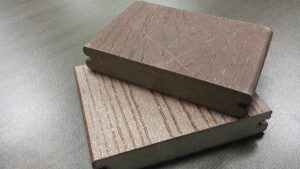Which is the Best Choice for Your Deck?
Fortunately building a deck is not what it once was. Running around from lumber yard to lumber yard to find the best quality Cedar is now somewhat a thing of the past. With the maintenance free craze and the new generation of maintenance free decking you need to ask yourself; is what I’m investing in truly maintenance free?, and Will this product last?
The truth is the market is full of “maintenance free” boards that will let you down, and “Maintenance Free boards” that are defiantly not as maintenance free as the manufacture would like to think. As most people will refer to all “maintenance free” decking as composite decking . Nothing could be further from the truth. Here is a quick break down of composite vs pvc decking research with regards to the “maintenance free” deck board today ranging from bad better to best.
Composite decking vs PVC decking
Composite decking is a blend of wood fibers, recycled plastics, and binding agents. This combination results in a product that mimics the look and feel of natural wood while offering enhanced durability and resistance to fading, staining, and scratching. When it comes to synthetic decking, composites are on the entry-level in terms of cost.
They are also on the entry level of quality. Personally I would put Pressure treated decking on my deck before I put a composite on for the cost difference it is far from worth the upgrade. Composite decking is available in various textures and finishes, including embossed wood grain patterns, providing a realistic appearance that complements any outdoor setting. Like PVC decking, composite boards require minimal maintenance, with no need for sealing or painting.

Capped Composite Decking
Capped composites represents a hybrid between composite and PVC decking. A composite (wood/plastic) core is wrapped with a shell of PVC (or similar) material.
As for cost, capstock comes in higher than composite and just lower than PVC. In short. Manufactures have wrapped a composite product with a PVC capping; this makes the board far more resilient to scratching, mold, mildew, and swelling. WARNING! Not all capped composites are the same. Some manufactures only put a capstock on the top and sides of the board leaving the bottom unprotected.

understanding PVC Decking
Polyvinyl chloride (PVC) decking is made from 100% synthetic materials, typically a blend of plastic and additives. PVC boards are known for their exceptional durability and resistance to moisture, mold, and rot. Unlike wood, PVC decking does not require sealing, staining, or painting, and minimal maintenance is required beyond occasional cleaning, making it a low-maintenance option for busy homeowners.
PVC decking is your top of the line product when it comes to decking for decks low to grade or poolside. PVC decking can sit in water all day every day as the beautiful element of PVC is that it does not retain moisture. Additionally, PVC boards are available in a wide range of colors and styles, allowing for endless design possibilities.

PVC Decking, with an ASA capstock
ASA is the absolute latest technology in the decking industry. ASA = Acrylonitrile Styrene Acrylate. What the heck is that? In language that makes sense ASA is a plastic resin that is heavily used in the automotive industry to form dashboards.
ASA can take an absolute beating from the suns UVA, UVB rays with very little fading over a span of 25 years. ASA decking will have all the benefits of a normal PVC deck board, with a capstock on PVC steroids. ASA decking is also much cooler on the feet than conventional wood or composite decking and is by far the best value decking on the market place.

Comparing the Two: Composite vs pvc decking
When comparing composite vs PVC decking, several factors come into play, including cost, maintenance requirements, durability, and aesthetics.
Cost: PVC decking typically comes with a higher price tag upfront compared to composite decking. However, PVC’s long-term durability and low maintenance may offset this initial investment over time.
Maintenance: Both PVC and composite decking are low-maintenance options, requiring only occasional cleaning with soap and water to maintain their appearance. However, PVC decking may have a slight edge in terms of resistance to stains and scratches.
Durability: PVC decking is known for its superior durability and resistance to moisture, making it an ideal choice for areas with high humidity or exposure to water. Composite decking is also highly durable but may be susceptible to mold growth in damp environments if not properly maintained.
Aesthetics: Both PVC and composite decking offer a wide range of colors, textures, and finishes to suit any design preference. While PVC decking may have a slightly more uniform appearance, composite decking often provides a more natural look with authentic wood grain patterns.

The choice ultimately depends on your priorities, budget, and specific requirements for your outdoor space. PVC decking offers unparalleled durability and low maintenance, making it an excellent choice for homeowners seeking a hassle-free option with long-term value. On the other hand, composite decking provides a natural look and feel with added strength and resilience, making it a popular alternative for those who desire the aesthetic of wood without the drawbacks. Whichever option you choose, composite vs PVC decking, both PVC and composite decking can transform your outdoor oasis into a beautiful and functional retreat for years to come.
